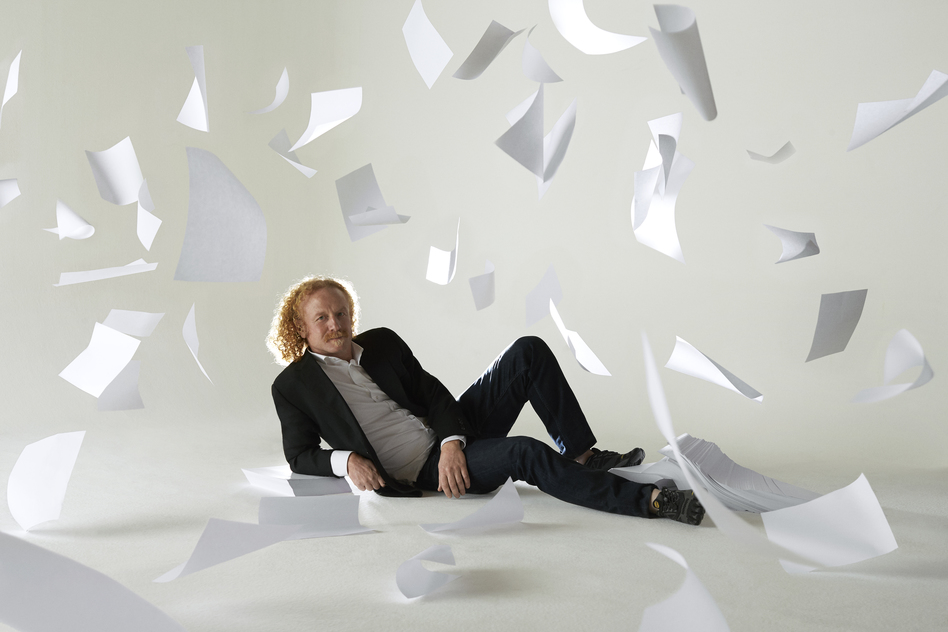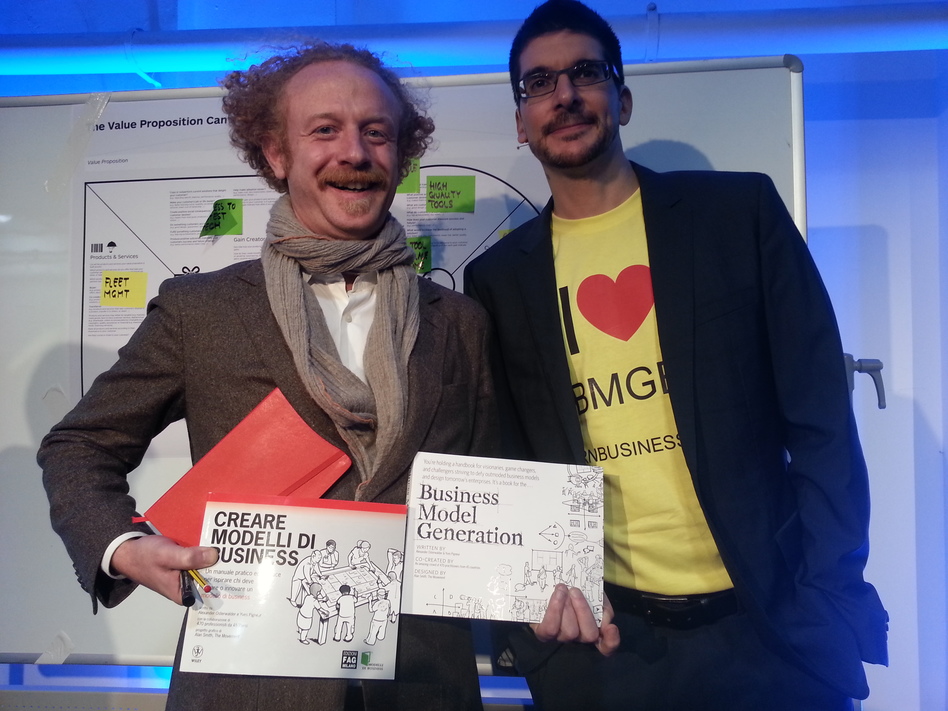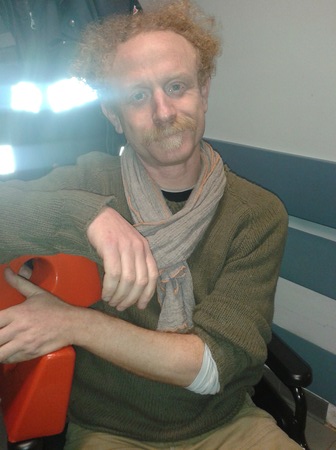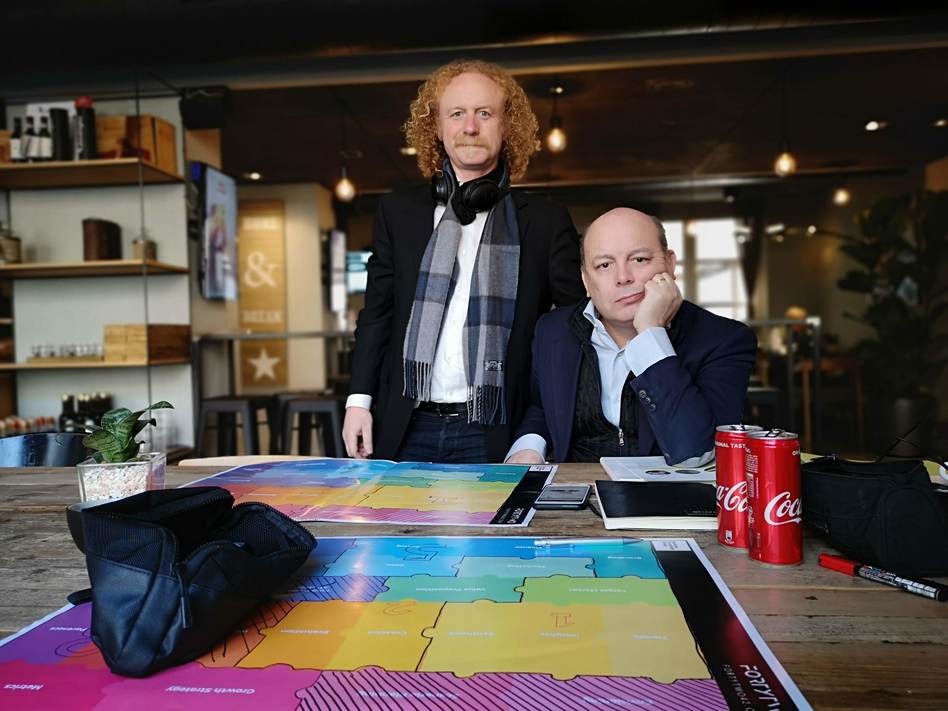Who am I?
Yes there is a real person behind the onatatime system

Fancy picture of Ugo Mendes Donelli
This fancy picture of yours truly is a bonus for you in recognition of your effort in investigating who is the creator of oneatatime.
Table of contents
Very short version: for the lazy
My name is Ugo Mendes Donelli. I have been dealing with problems about how much time and effort will be needed to complete a project, and it's subtasks, in an extremely volatile and uncertain professional environment for more than 10 years. I am a person who is all about learning, applying and creating new things. In the last 10+ years I also owned 2 companies and helped companies solve business problems.
I am sharing this oneatatime system with you because I think it is useful, and because I am generous.
Short version: for normal people
I am both a technical and a humanities person. I have written this website from scratch. The HTML, part of the CSS, some Javascript and Python for the server side. I can write programs in C, C++, Java, Ruby, Python. I have a degree in Mechanical Engineering. My customers pay me for speacking in front of audiences, teaching and training. In the surveys, after the events, I am always one of the highest rated by the audience. I own a company that offers consulting services in business strategy and innovation. I also rent an apartment to tourists in Milan, Italy.
I have a beautiful wife and a young daughter who attends school.
I post my coffee everyday on Twitter.
After suffering a painful setback, I experienced that the time management techniques that are available today, can fall short when the going get's tough. I had to study, learn and try different strategies to overcome my bad situation. During those hard times I crafted a new system, composed of 3 major pillars, for dealing with energy, emotion, and time.
On this website I share what I learnt, and I've called it oneataime.
Long version: for the curious
Background
I studied and graduated in Mechanical Engineering at Politecnico di Milano while working on the night shift, on the shop floor of a semiconductor factory: ST-Microelectronics. My university years were dedicated to study and work. And I was also able to have fun and party in Milan Clubs. I fell in love with a beautiful girl, and I still live with her since then.
Those were tough and very funny years of my life, and I remember the great pride I experienced when I finally graduated, and could finally think of building my adult life.
First job
My first job as a mechanical engineer was for a manufacturer of gear boxes for agricultural machines. I was in charge of production. I woke up early in the morning, opened the factory, prepared coffee for the workers, organized the production of the day, accepted orders, drew custom parts, made orders, checked the supply quality, and closed the factory late in the evening. First in, last out. But that wasn't a problem. The problem was that I had 8 bosses: the grandfather, the father and his sisters, and my boss.
I lasted 6 months, then resigned.
From software engineer to project manager
Then I decided that I wanted to work as a real engineer: I wanted to design something I could feel my own. So I started to look for a company where this could be possible, and I found one at a job fair organized by my university. It was a French technical consulting company who consulted in Aerospace, Defence, Railroad, Automotive, White goods, Power Plants and Power transmission industries. I did everything possible to get hired, and it turned out that my competences in foreign languages and programming languages, made the difference. I was hired as a programmer, waiting for a spot as mechanical engineer to free up. And it never happened, and I loved the time I spent working for that company.
It was a consulting company that was keen to take risk and offer turn key project as opposed to time and material. I soon found myself in charge of projects up to half million euro. I had earned a reputation for being a great industrial grade software programmer, a skilled project manager, and a creative problem solver. You don't have to believe me, you can read the testimonials of some of my customers, my coworkers and my boss on my LinkedIn profile.
Marco Raimondi my boss at the time
R&D manager
Then I accepted a position as R&D manager in a test and measurement systems company. I reported directly to the CEO and owner of the company and worked with some of the most brilliant electrical and electronic Engineers. It was a very exciting and demanding time of my life because the company was always on the edge of what was technically and human possible. The company supplied some of the biggest automotive industry players, internationally, taking up tough challenges daily.
My daily routine started early, managing a team of software engineers located in India in the early morning, managing the engineers, the business partners, the university research teams in Italy, during the bulk of the day, and finally the research groups in the US, in the evening.
I am very proud of being the inventor, together with brilliant engineer Valentina Pedoia, of a new system for inspecting tires using X-Rays
Being fired during the Great Recession
Eventually the Great Recession kicked in, and I was fired. I had a newborn baby girl and started to look for job.
I went through countless rejections and disappointments. Despite having a great track record as a manager and great experience as an engineer, I could not land anywhere. All the companies were too scared and were mostly laying off people, to feel the need to hire someone like me. It was very tough times, when I struggled to make ends meet.
At that time, I made friends with Sergio Bonomi, who has been a pioneer in digital services and digital advertising, and we put together a digital project for real estate. I started to work on the technical issues of building a digital service platform, pitched our idea to investors all over Europe, and started reading anything, I could put my hands on, about how to start a new company.
A new hope
It was then when I read one of the books that changed my life the most: Business Model Generation, by Alexander Osterwalder.
It was a true revelation: a system for thinking of and designing a business architecture, and strategy. Easy enough to grasp, and very powerful. I wrote about it in my website, hugowiz.it, and people started to notice. The CEO of a company asked me to introduce the book to his employees, and it was a massive success. Then a massive multinational asked me to hold a training session for their managers, and it was another success.
Then the author of the book, Alexander Osterwalder, came to Milan, Italy. I met him at the conference and asked him if I could spread the word and bring his Business Model Canvas to Italian companies, and he told me to do so. Short after that I started my first company, Hugowiz, for teaching and training Business Model Innovation. I was the first in Italy to teach and consult about Business Model Innovation, and when the Italian publisher needed someone to review and edit the translation they asked me to do it.

Alexander Osterwalder and Ugo Mendes Donelli
Alexander Osterwalder and Ugo Mendes Donelli at the Business Model Generation Workshop & Masterclass - London December 5th 2013
Becoming a businessman
I still wasn't out of the tar pit. I partnered with Sergio Bonomi in two companies. I had 51% shares of Hugowiz, and 49% shares of Piano Adv, a digital advertising company, mostly acting as an agent for selling digital advertising real estate on behalf of content publishers, but also building and maintaining websites, running direct email marketing campaigns and managing our own campaigns.
It was not easy at all, because nobody understood the whats and the whys of Business Model Innovation and digital advertising was dominated by the big boys. During those years I learnt a lot about running a business, hunting for customers, dealing with Italian business regulation, dealing with a business partner.
Four years after starting our businesses, Sergio Bonomi and I, eventually parted, and found each other with 100% shares of our respective companies: Sergio had Piano Adv, and I got Hugowiz.
Gaining some traction
After so much time passed advocating for Business Model Innovation, consulting companies both very big and small, teaching and training all kind of people, the thing started to become more interesting in the eyes of my prospects, and I started to receive more and more inbound requests for my services.
At the same time, the Italian publisher of Business Model Generation wanted to replicate the success of that book, and started investing in acquiring the rights of other books on innovation. So I found myself in charge of editing the translation of two other innovation books: Ten Types of Innovation, by Larry Keeley, and The 4 Lenses of Innovation by Rowan Gibson. They also asked me to translate another book about innovation : Gear Up, by Lena Ramfelt, Jonas Kjellberg, and Tom Kosnik.
At that point, my name was on 4 innovation books, I had been invited to talk in many innovation and business events, I was experiencing some growing success, and I was considered the Italian reference for Business Innovation.
The fall
At the time I was in touch with Rowan Gibson, the author of The 4 Lenses of Innovation, and I was trying to organize a massive event, a workshop about Gibson's Innovation approach, for more than 700 people, in partnership with the 6th Italian bank. It was a very ambitious project that was going to be epic, bringing an international innovation guru in Italy for the first time. But I failed miserably, and I ended up wasting 8 months of work.
Shortly after that I fell from the skateboard, and dislocated my right shoulder. Having happened just after the event failure, that incident ended up triggering a severe burnout. I started to become lethargic and could not find the energy for doing even the most simple of things. At first, I hoped that I would have recovered, if I rested for a week, then 2 weeks, but nothing happened, and it was clear that I was not able to work anymore.
As usual, I didn't give up. I tried meditation, then hired an energy nutrition expert, then a training coach. I tried a lot of things, and none worked. Also, the time management systems I knew, and used at the time didn't help.

Spalla slogata
Ugo Mendes Donelli con una spalla slogata, verso mezzanotte il 2 febbraio 2017 all'ospedale Sacco a Milano
It was then that I designed the oneatatime planner and started building a system for managing time and energy on what I learnt from my efforts for getting myself out of the burnout and get back to work better than before.
Rising again
I made friends with Alessandro Poerio, the CEO of FORTYtwo an innovation consulting company with a sweet spot for visual approaches. With him, I was certified in two innovation methods: Business Innovation Design, by Jeffrey Tiendra, and The Hero Plan, by Daniel Vecino.

Alessandro Poerio and Ugo Mendes Donelli
Alessandro Poerio and Ugo Mendes Donelli at Copernico working on a project for a customer - Milan March 1st 2019
It was during that time that I started to put toghether oneatatime. I shared some pictures of the oneatatime planner on Facebook. I gathered the contacts of a hundred of people who wanted to try the oneatatime planner. I printed the planner and sent it to them to test it. Then I started to sell oneatatime training to companies and successfully delivered 8 workshops.
On June 2019 oneatatime website went online, essentially a one-page site, for selling workshops to business customers, and explain how the workshop works.
The COVID-19 pandemic
Here in Italy, the first lockdown started on March 9th 2020. We have been the first western country hit by COVID-19. It was a strict lockdown: all the activities were closed except for the essential ones. All the projects that Alessandro and I had running with customers were stopped. All the new projects that we were starting were cancelled.
We immediately converted all our projects for being delivered online, successfully. We have been one of the few who were able to deliver innovation programs during the pandemic. Clearly our business suffered anyway, as many others in our country and worldwide.
Now that the dust has settled, and dealing with the pandemic has become normal, now I am ready to share oneatatime with you. You will find regular content published on the website, and I will share a number of challenges for experimenting the techniques that I am sharing.
I am ready for the day, and you?